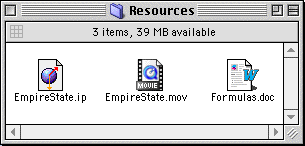| Issue: |
| The purpose of this lab was to determine the velocity of a penny that is dropped off the top of the Empire State Building just before it hits the ground. Although this problem may at first seem extremely simple, it changes if we introduce air resistance. For a problem like this, we are not looking for a numerical solution, but rather general observations on a graph.
Microsoft Excel provides a great way to model this situation, and manipulate the data to produce a variety of graphs. Try to model this now in Excel. If you have problems, you should refer back to our Excel Modelling Page. Graph position, velocity, and acceleration vs. time. |
|
Solution:
|
|
Here is the simulation of an object falling with spontaneously generated a, v, and s curves. If this is totally different from what you got, you may want to try again before scrolling down.
Note accaleration starts as just gravity, then diminishes to zero. Velocity starts with zero, then approaches terminal velocity. The position graph is curved at first, but notice how linear it looks after acceleration gets close to zero. |

|
If we know the velocity at any moment, we can multiply that value by k and get the force on the object provided by air resistance. This is called the Laminar force.
|

|
Now we know that the net force on the falling object is simply this Laminar force subtracted from the gravitational force. We can plug this into our standard F=ma, and get the relationship below.
|

|
This relationship can easily be manipulated into a expression for acceleration. This is the key to our Excel simulation. Download the spreadsheet at the bottom to learn how we generated the data and made our graphs.
|

|
Also, here is the general relationship for terminal velocity. For right now, we'll leave the denominator as "k", but for those of you who are curious about the relationship of air friction, click here.
|

|
|
Interactive Physics is a powerful simulation program that is available from MSC Working Knowledge. IP documents are playable with Interactive Physics v1.2 or later. Earlier versions may be compatable.
|
|
Text versions of the equation work are made with Microsoft Equation Editor and are embedded in Microsoft Word documents.
|
|
Movies are saved in QuickTime format available at Apple's site. Get Quicktime 4 today!
|
 |
|
|
|





